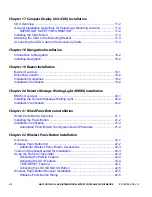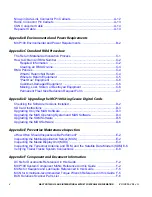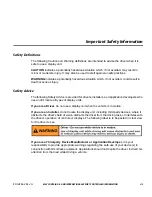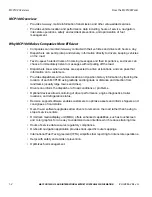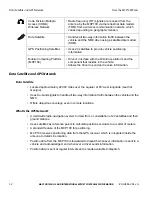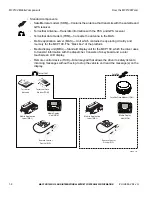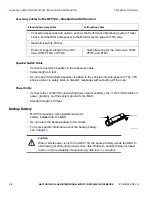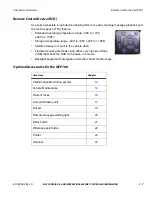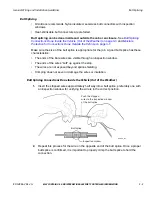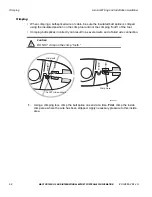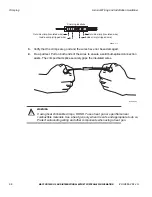
80-J4866-2 Rev. G
MAY CONTAIN U.S. AND INTERNATIONAL EXPORT CONTROLLED INFORMATION
1-5
How the MCP100 Works
CDMA Wireless Network and PCS
CDMA Wireless Network and PCS
• Terrestrial MCP100 uses CDMA technology to connect dispatchers and vehicles over the
wireless airwaves.
• The Personal Communications Service (PCS) System is a low-powered, higher frequency
competitive technology to cellular, ideal for “in-city” trucking and transport.
• Wherever a terrestrial wireless network exists, drivers can send information to and receive
information from dispatchers while traveling.
How the Terrestrial MCP100 Uses PCS
• MCP100 includes the MAS, which consists primarily of a microprocessor, a wireless
modem module (TDM), and data storage.
• The user interface device is the driver’s display terminal that enables the driver to read,
write, and send messages.
• Antenna is responsible for relaying information between dispatch and the driver.
• Antenna receives and transmits wireless information to and from the MAS.
• Antenna interfaces with local wireless networks. Information is collected at the PCS
gateway and obtained by the Omnitracs NOC where it is distributed to the dispatch center.
Dispatchers respond by sending information back to the Omnitracs NOC, where it is
relayed to the PCS gateway and broadcast out to the wireless network to be picked up by
the vehicle’s antenna.
MCP100 Mobile Components
• Mobile part of the Omnitracs platform installed in a customer’s vehicle.
• Provides the driver with the ability to exchange information with the dispatch center.
• Sends vehicle location information to the NOC.
• Each MCP100 has its own unique unit address which is the serial number on the MAS.
This address is used by the NMC to route information to the correct vehicle. The unit
address for a particular vehicle changes if the MAS in the vehicle is replaced.
• MCP100 operator, typically the driver, uses the display screens for creating, sending, and
reading messages; system verification; and troubleshooting.




